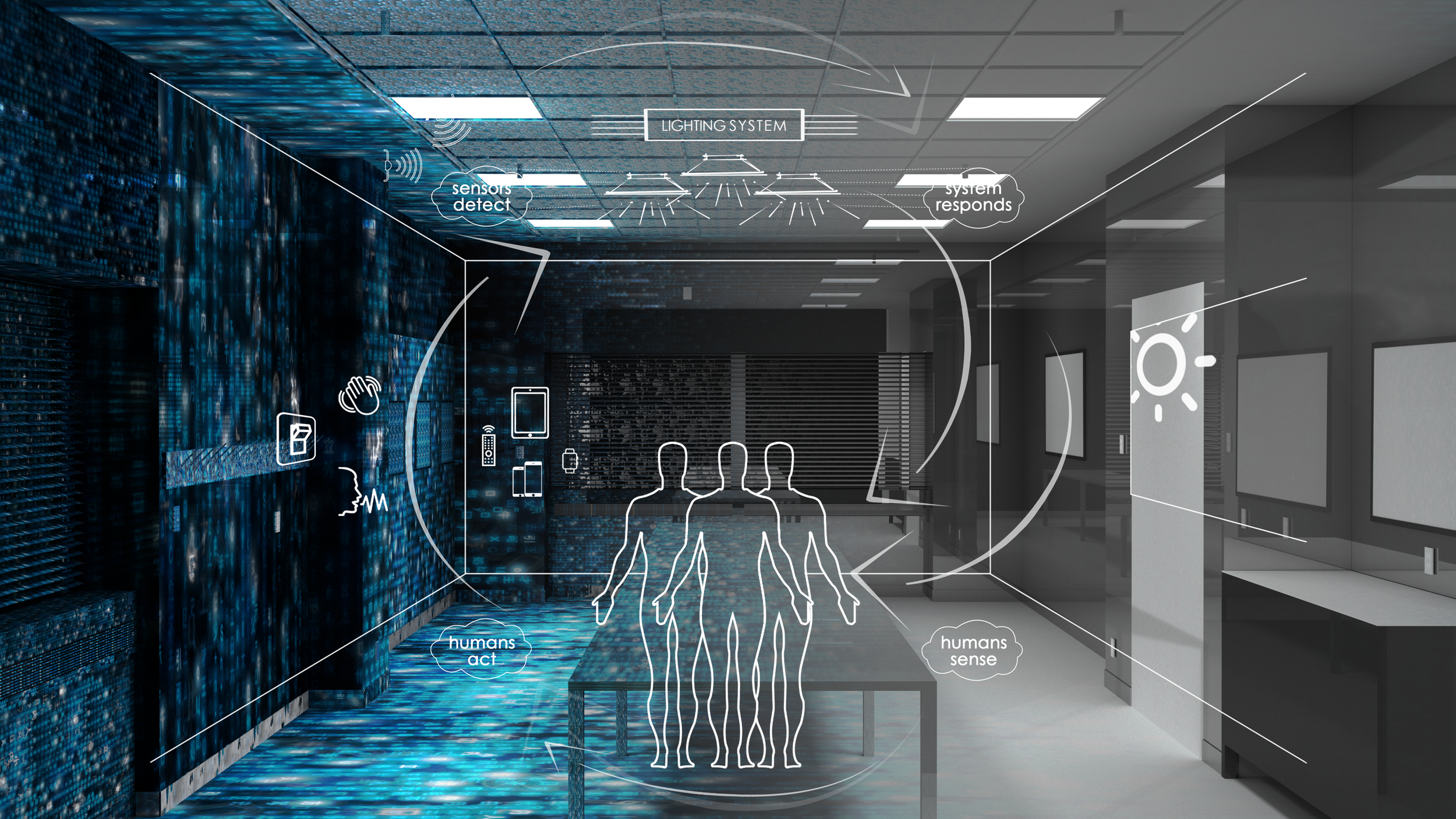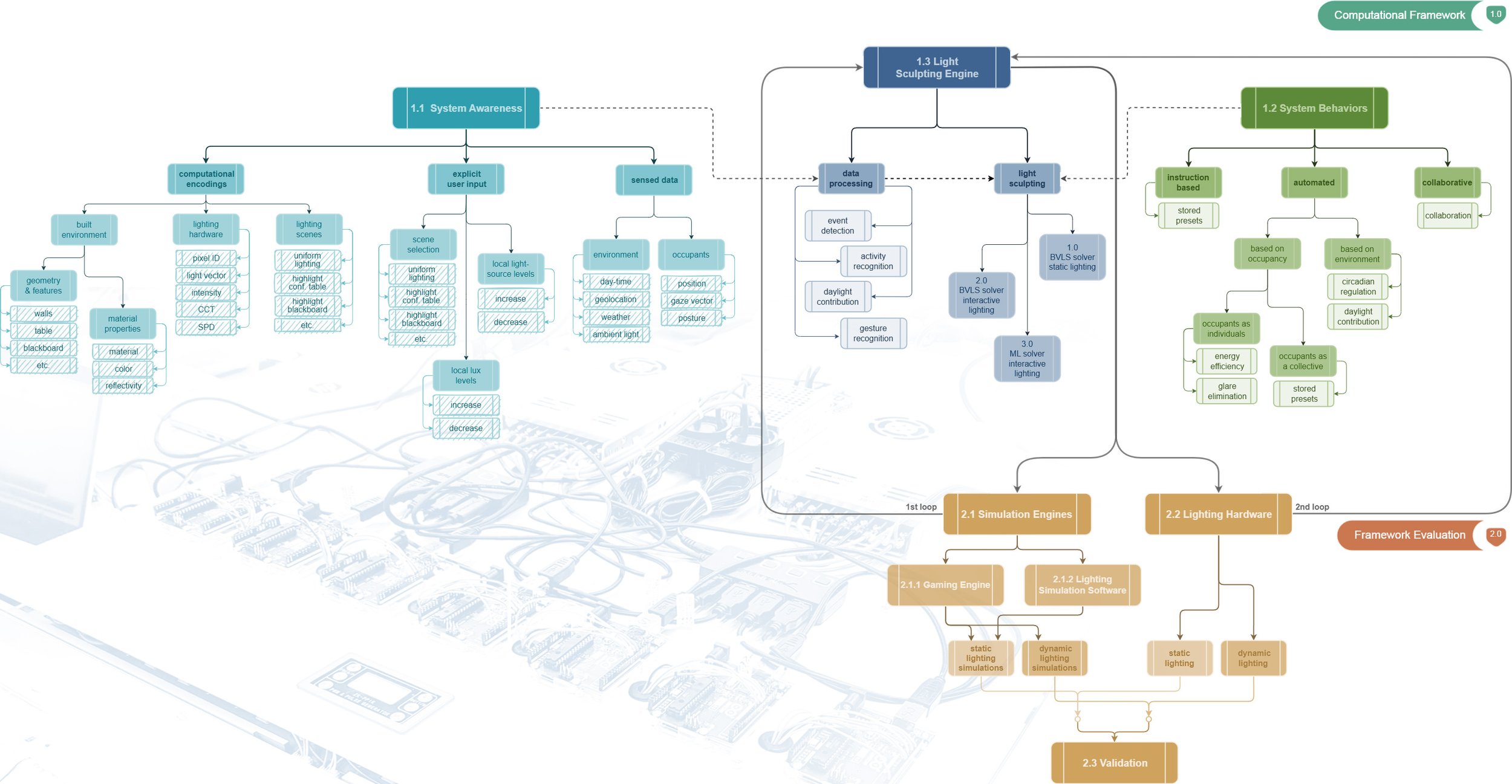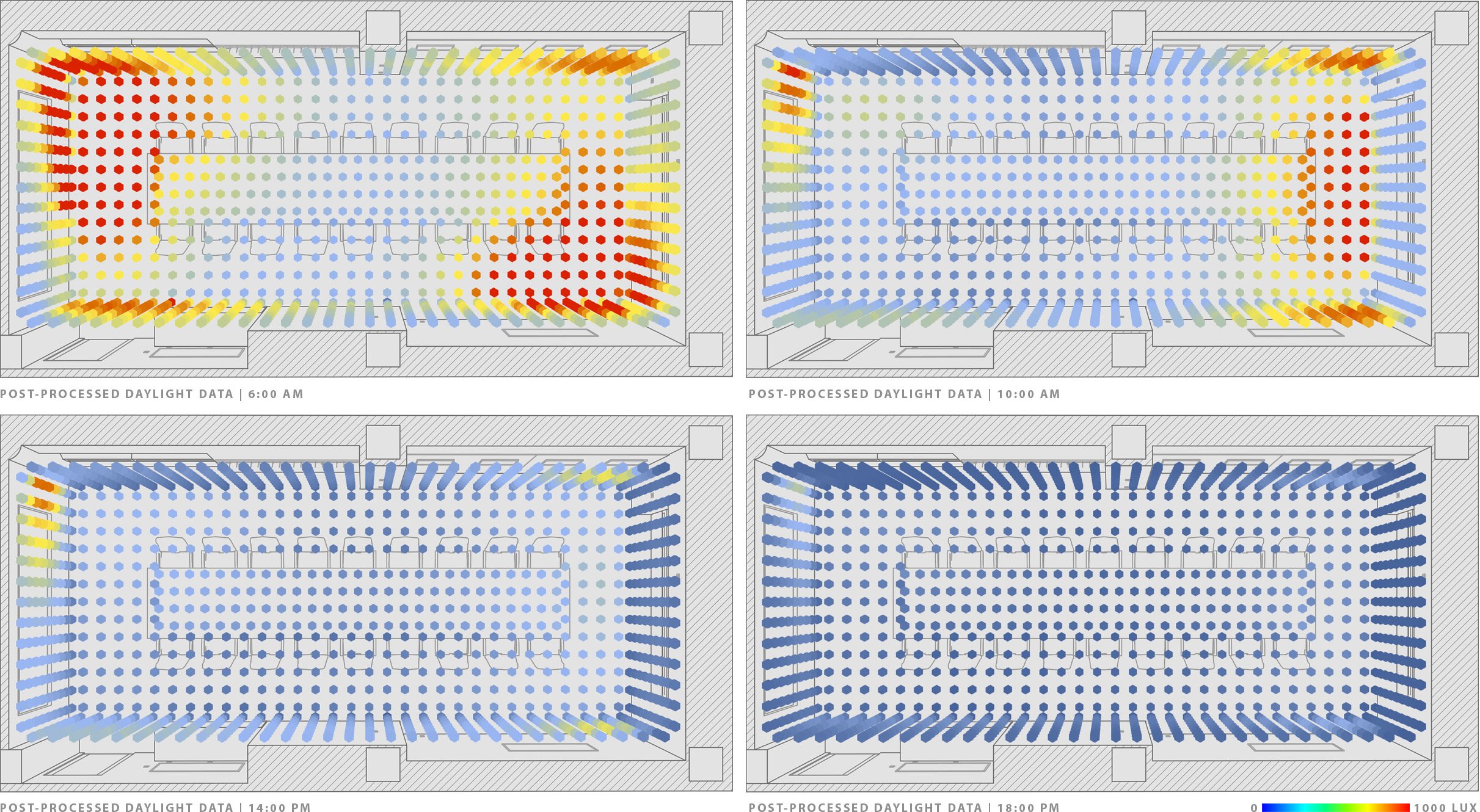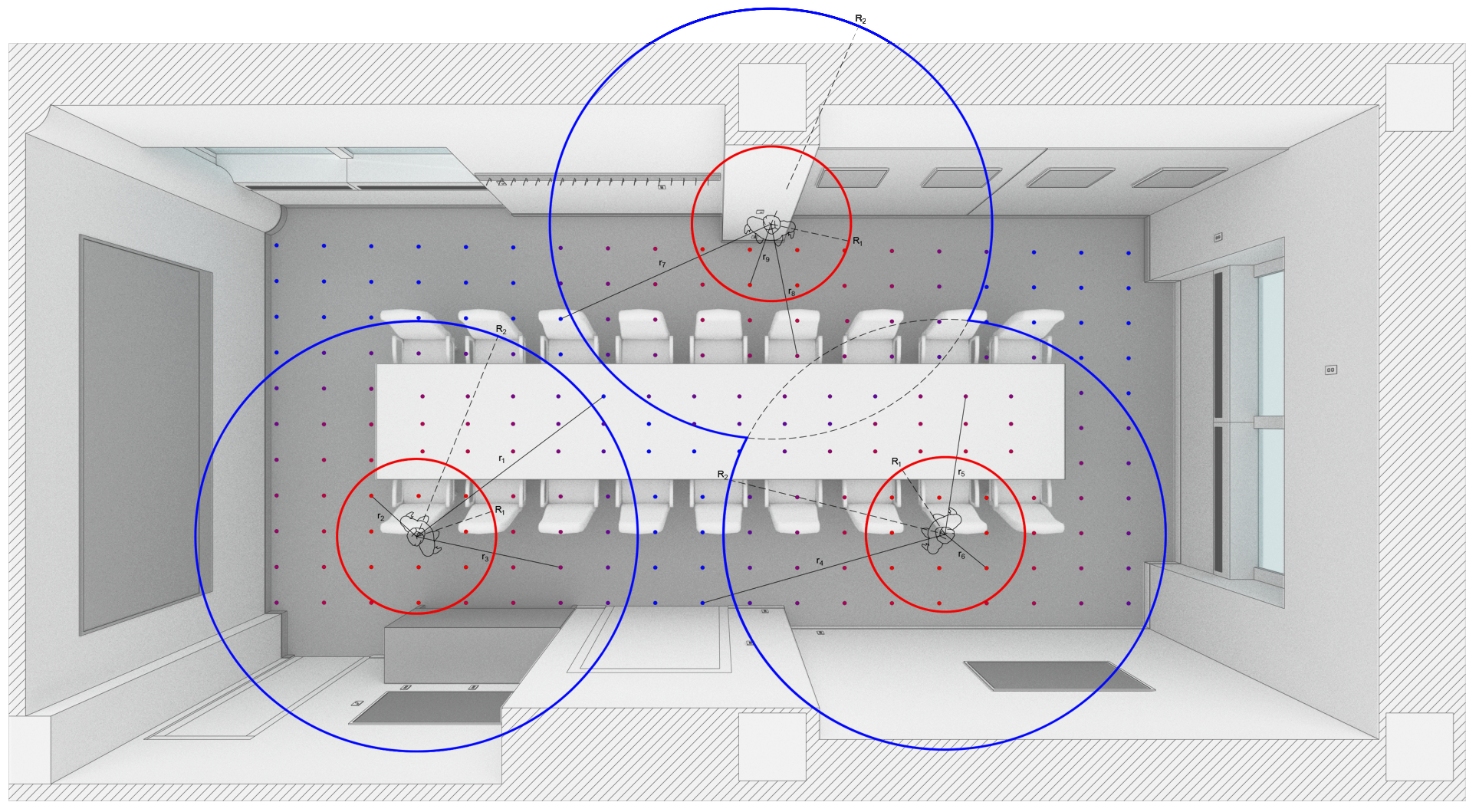Human Building Collaboration: A Smart Lighting Case Study





Building automation systems have gained increased attention by means of their ability to improve building performance. They increasingly rely on Artificial Intelligence, sensors, and the Internet of Things to autonomously detect changes and adapt to their surroundings. Contemporary lighting devices have similarly evolved into context-aware systems that react to occupant behaviour or changes in ambient lighting, acknowledge user preferences, and personalize lighting. This trend requires that lighting designers incorporate into their design logic ideas of automation, dynamic controls, and user-system interaction. In an attempt to further the profession of lighting design and help designers navigate the shift from conventional to interactive lighting design practices, in this research project a holistic computational framework is developed that cohesively addresses the design and evaluation of digitally programmable lighting systems. Specifically, this work establishes: (a) a computational framework for designing systems that sculpt light, delivering activity-tailored illumination where and when needed, (b) the levels of user-system interaction that may be attained as well as the minimum hardware requirements to accommodate them, (c) a method for evaluating the resulting systems virtually (real-time & offline simulations) and physically (hardware, testbed), and (d) a simulation platform developed in a gaming engine to accommodate real-time lighting simulations. In addition, it presents (e) three implementations that demonstrate how the framework may be applied to synthesize systems that comply with each of the discussed levels of interaction and (f) two additional implementations that demonstrate how the framework may be universally applied in any space and with any digitally programmable lighting hardware. The results of the study suggest significant potential for improving system performance and autonomy as well as user experience and well-being in scenarios requiring task-specific and context-adaptive lighting.
Project Date: 2020-2023
Researchers: Alexandros Tsamis, Constantina Varsami, Robert F. Karlicek Jr, Diego Pinochet, Daniel Rosenberg
Collaborators: CASE, LESA, Lumileds LLC, HKS Inc.
Sponsors: Department of Energy (Office of Energy Efficiency and Renewable Energy)
Acknowledgement
This work was produced as a collaboration between the Center for Lighting Enabled Systems and Applications (LESA), and the Center for Architecture Science and Ecology (CASE), both at RPI, Lumileds LLC, and HKS Inc., in the context of a DOE funded project (Office of Energy Efficiency and Renewable Energy). Bob Karlicek led the DOE grant Efforts as Principal Investigator. The authors would like to sincerely acknowledge the contribution of all project collaborators and the support of the DOE.
Publications:
_ Varsami, C., Logan, T. Tsamis, A. (2022). Gaming Engine as a Tool for Designing Smart, Interactive, Light-Sculpting Systems. Proceedings of the International Conference of the Iberoamerican Society of Digital Graphics (SiGraDi 2022). November 2022.

